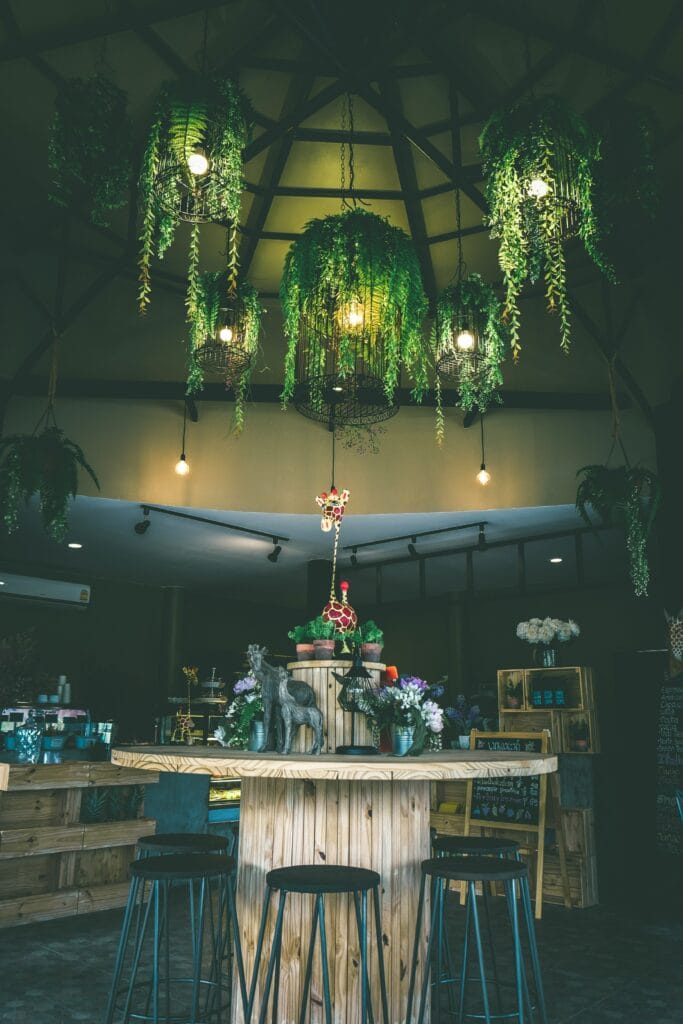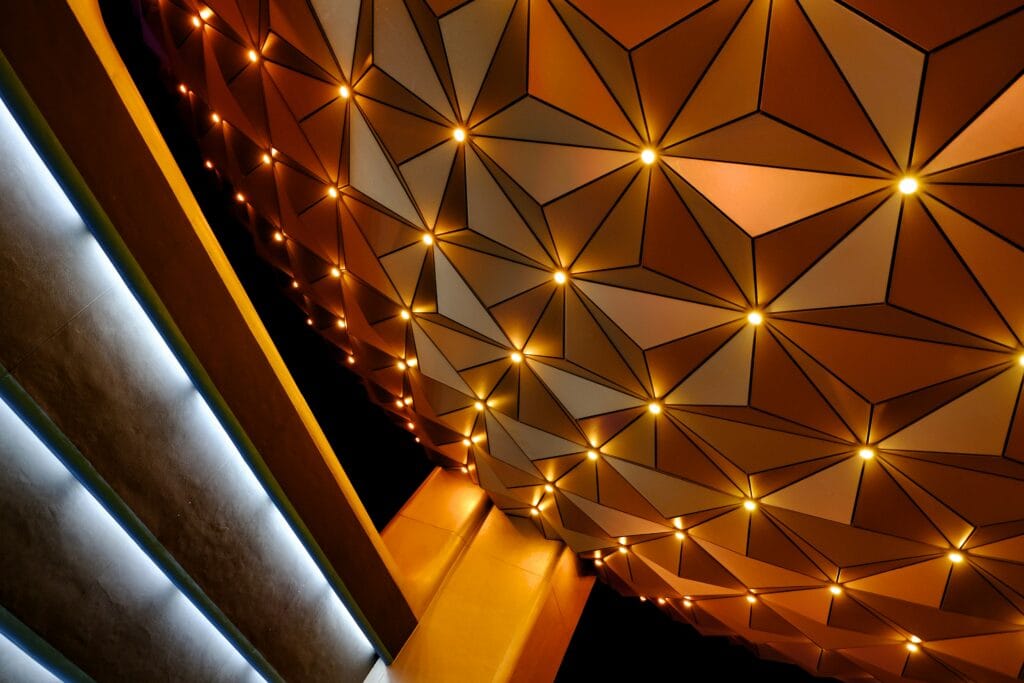Are you looking to ensure your commercial lighting is both efficient and long-lasting? I will explore the importance of commercial lighting maintenance and provide tips on keeping your lighting in top condition.
From the benefits of regular maintenance to common tasks and helpful tips, we will cover everything you need to know to improve the longevity and efficiency of your commercial lighting.
Let’s get started!
What Is Commercial Lighting Maintenance?
Commercial lighting maintenance involves routine inspections, cleaning, and servicing of lighting fittings to ensure optimal performance and longevity. Inspecting lighting fittings is crucial to identifying potential issues, such as loose connections or damaged components, that could affect the lighting system’s functionality.
Cleaning lenses and reflectors help maintain light output quality and prevent a build-up of dirt or debris that can diminish brightness. Ensuring the proper operation of all components, including bulbs, ballasts, and controls, is essential for consistent performance and energy efficiency.
Regular maintenance prevents performance issues and extends the lighting system’s lifespan, saving costs and ensuring a well-lit, safe environment for customers and employees. This brings us to the next topic of why commercial lighting maintenance is important.
Why Is Commercial Lighting Maintenance Important?
Regular commercial lighting maintenance is important for energy efficiency, consistent performance, and long-term cost savings. Maintenance ensures optimal lighting conditions by preventing issues that could lead to expensive repairs or replacements. This leads us to the benefits of regular maintenance.
What Are the Benefits of Regular Maintenance?
Regular maintenance of commercial lighting systems offers multiple benefits, including extended lifespan of LED fixtures, energy savings optimisation, and maintenance of high-quality lighting standards across commercial spaces.
Regularly inspecting and cleaning lighting fixtures can identify potential issues early, preventing costly repairs and downtime. Preventive maintenance routines help maintain consistent brightness and colour temperature, enhancing the space’s overall ambience. This contributes to employees’ and customers’ comfort and well-being, boosts productivity, and creates a more inviting atmosphere. Understanding the frequency of these maintenance tasks brings us to the next topic of how often commercial lighting should be maintained.
How Often Should Commercial Lighting Be Maintained?
The frequency of commercial lighting maintenance depends on several factors, but a general recommendation is to perform thorough inspections and cleanings at least twice a year to ensure optimal performance.
By establishing a regular maintenance schedule, businesses can significantly reduce the risk of unexpected breakdowns and costly repairs. Customising the maintenance plan to fit the exact requirements of the commercial space is important to address any special challenges or issues that may arise.
Periodic inspections identify potential issues early, allowing for timely repairs and adjustments. Factors such as the type of lighting fixtures, environmental conditions, and operating hours determine the maintenance frequency. Proper maintenance enhances the efficiency and longevity of the lighting system and ensures a safer and more comfortable work environment for employees and customers. This brings us to the most common maintenance tasks for commercial lighting.
What Are the Most Common Maintenance Tasks for Commercial Lighting?
The most common maintenance tasks for commercial lighting include:
- Cleaning and dusting of fittings
- Replacing bulbs and ballasts
- Checking for wiring issues
- Inspecting for any damage or wear that could impair performance
Cleaning and Dusting
Regular cleaning and dusting of commercial lighting fittings are essential to maintain optimal brightness and ensure high-quality lighting throughout the space.
When cleaning and dusting lighting fittings, follow a few key steps. Start by turning off the electricity to the fittings to ensure safety. Dusting should be done regularly with a soft cloth or a feather duster to prevent dust build-up. For a more thorough cleaning, consider using a mild detergent mixed with warm water for glass fittings.
Regular maintenance enhances the fittings’ aesthetic appeal and significantly preserves their functionality. Pendant lights, chandeliers, and recessed lighting all require slightly different cleaning techniques, so using the appropriate materials for each type is essential.
Replacing Bulbs and Ballasts

Replacing bulbs and ballasts is a critical maintenance task that ensures consistent performance and avoids disruptions in lighting.
Timely replacement of bulbs and ballasts is key to maintaining optimal lighting conditions in any space. Regularly changing these components not only helps in preventing sudden failures but also contributes to energy efficiency.
LED bulbs, in particular, offer several advantages over traditional options. They are known for their longer lifespan, lower energy consumption, and superior brightness.
To determine when replacements are needed, look for signs such as flickering lights, dimming, or visible bulb or ballast damage. Addressing these issues promptly can prolong the overall lifespan of your lighting system.
Checking for Wiring Issues
Checking for wiring issues during routine maintenance is essential for ensuring the safety and reliability of LED fittings in commercial lighting systems.
Proper wiring maintenance enhances the longevity of LED fittings and greatly reduces the risk of electrical fires or malfunctions. When inspecting the wiring, watch out for frayed insulation, exposed wires, or signs of overheating. These issues can lead to short circuits or electrical shocks if left unattended. Addressing such problems promptly can prevent potential hazards and disruptions to the lighting system. Remember to follow manufacturer guidelines for wiring, connectors, and load capacities to maintain optimal performance and safety.
Inspecting for Damage or Wear
Regularly inspecting lighting fittings for signs of damage or wear helps extend their lifespan and ensures the reliable operation of the entire lighting system, including the LED driver.
When conducting these inspections, critical components like the LED driver must be paid special attention. The LED driver serves as the powerhouse of the lighting fitting, controlling the current and ensuring proper functionality. Identifying any issues with the LED driver early on can prevent system failures and costly repairs.
To conduct a thorough inspection, examine the fitting for any visible damage, such as cracks, loose connections, or discolouration. Check for wear or burn marks, especially around the LED driver area. Testing the driver’s functionality is also essential – ensuring it delivers the correct voltage and current to the LEDs.
Regular inspection and maintenance of your lighting fittings, especially focusing on critical components like the LED driver, can significantly extend your lighting system’s lifespan and prevent unexpected failures. This leads us to some tips for maintaining commercial lighting.
What Are Some Tips for Maintaining Commercial Lighting?

Maintaining commercial lighting effectively involves:
- Creating a well-defined maintenance schedule
- Using energy-efficient bulbs
- Considering the installation of motion sensors
- Training employees on proper use and care
Create a Maintenance Schedule
A detailed maintenance schedule ensures that all inspection and cleaning tasks are performed regularly and systematically. By having a structured plan, companies can avoid the risk of neglecting essential maintenance activities. Regular inspections help identify potential issues early, preventing costly breakdowns and downtime.
Setting the right frequency for inspections and cleanings is key. Weekly or even daily checks may be necessary for high-traffic areas or equipment, while less critical components may only require monthly attention.
An effective maintenance schedule keeps operations running smoothly, extends the lifespan of equipment, and reduces the likelihood of major repairs.
Use Energy-Efficient Bulbs
Using energy-efficient bulbs, such as LED bulbs, can significantly enhance energy savings and reduce operational costs in commercial spaces.
LED bulbs are known for longevity, lasting up to 25 times longer than traditional incandescent bulbs. Fewer replacements are needed, reducing maintenance costs and inconvenience.
LED bulbs emit very little heat compared to incandescent bulbs, making them safer and reducing the strain on air conditioning systems in warmer climates. Their lower electricity consumption translates to cost savings and contributes to a smaller carbon footprint, aligning with sustainability goals and environmental regulations.
Consider Motion Sensors
Motion sensors in commercial lighting systems can automate lighting controls and contribute to substantial energy savings.
Motion sensors detect movement and occupancy in a room and adjust lighting levels accordingly, ensuring that lights are only on when needed. This reduces electricity usage and extends the lifespan of light bulbs, saving maintenance costs as well. The automation provided by motion sensors plays an important role in reducing energy consumption and improving overall system efficiency. With the convenience of automatic lighting adjustments, businesses can create a more sustainable and cost-effective lighting environment while enhancing the comfort and productivity of occupants.
Train Employees on Proper Use and Care
Training employees on the proper use and care of commercial lighting systems is essential for maintaining optimal performance and extending the lifespan of lighting fittings.
Proper training ensures that staff members understand how to operate the systems efficiently, reducing the risk of damage or improper use that may lead to costly repairs. By educating employees on basic maintenance tasks, such as replacing bulbs or cleaning fittings, companies can prevent small issues from escalating into major problems that disrupt operations.
Teaching employees to identify potential lighting system issues enables them to proactively address concerns, ensuring a safe and well-lit environment for customers and staff. Regular maintenance improves the longevity and efficiency of commercial lighting.
How Can Regular Maintenance Improve the Longevity and Efficiency of Commercial Lighting?
Regular maintenance improves the longevity and efficiency of commercial lighting systems by reducing energy consumption, preventing costly repairs, and ensuring peak performance. Below are ways regular maintenance improves the longevity and efficiency of commercial lighting.
Reduces Energy Consumption
Regular maintenance helps reduce energy consumption by ensuring all lighting fittings and components perform efficiently without consuming unnecessary power.
During routine inspections, trained professionals can identify faulty components or outdated technologies causing energy wastage. Businesses can optimise their energy use and avoid unnecessary expenses by promptly replacing or repairing these issues. In addition, implementing energy-efficient practices such as switching to LED bulbs, installing smart lighting systems, and utilising natural light sources can contribute to long-term energy savings.
Prevents Costly Repairs
One of the primary benefits of regular maintenance is preventing costly repairs. It allows for early detection of potential issues, such as problems with the LED driver, before they escalate into more powerful and expensive problems.
This proactive approach helps maintain the system’s efficiency and functionality and prolongs its lifespan. You ensure smooth operation and prevent unforeseen breakdowns by conducting routine inspections and promptly addressing any issues with critical components like the LED driver. Investing time and resources in these maintenance tasks can significantly reduce the risk of facing sudden and expensive repairs that may disrupt your operations and cause inconvenience. It’s a cost-effective strategy that pays off in the long run, saving both money and hassle.
Extends the Lifespan of Lighting Fixtures
Regular maintenance significantly extends the lifespan of lighting fittings by ensuring all components are in good working condition and performing optimally.
By consistently cleaning and inspecting lighting fittings, potential issues can be identified early and resolved before they escalate, preventing major damage. Timely replacements of worn-out parts or inefficient components also play a critical role in enhancing the longevity of the fittings.
Maintaining optimal performance reduces wear and tear on fittings, enhancing overall efficiency and extending operational life. This proactive approach saves time and money while ensuring a well-lit, safe environment for all occupants. These benefits lead us to the final thoughts on maintaining efficient commercial lighting.
Final Thoughts on Maintaining Efficient Commercial Lighting

Maintaining efficient commercial lighting systems requires a proactive approach to regular maintenance, which ensures consistent performance and cost savings and enhances energy savings and overall operational efficiency in commercial spaces.
Regular maintenance plays a critical role in optimising lighting systems’ performance. By conducting routine inspections and timely repairs, businesses can significantly reduce maintenance costs and prevent unexpected breakdowns that disrupt operations. This proactive approach not only prolongs the lifespan of lighting fixtures but also minimises energy consumption, leading to substantial energy savings over time.

